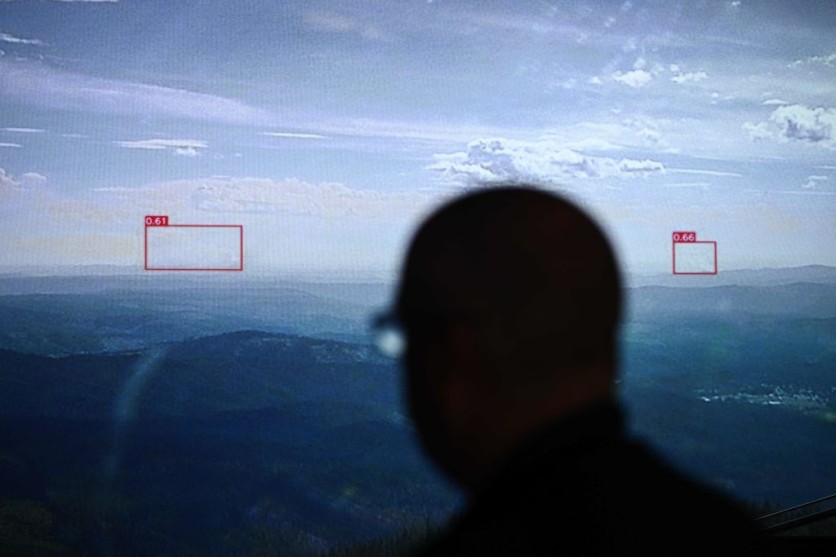A telecommunication company in Canada is deploying and installing artificial intelligence (AI) cameras to address the risk of wildfires associated with climate change.

(Photo : PATRICK T. FALLON/AFP via Getty Images)
Red boxes indicate potential fire starts to Cal Fire fire captain Kris Yeary on a screen of cameras with artificial intelligence (AI) technology powering the ALERTCalifornia wildfire camera network to help firefighters detect new fire starts from Cal Fire's San Diego County headquarters in El Cajon, California on September 6, 2023.
Telecommunication Company in Canada Leverages AI Tech to Combat Wildfires
Rogers, the Canadian company leading this innovative initiative, recognized that climate change is a global concern, as its Chief Executive Officer Tony Staffieri highlighted. These AI cameras can detect smoke from wildfires at a remarkable distance of up to 12 miles (20 kilometers).
Their deployment represents a cutting-edge and essential technology for early wildfire detection, swift incident response, and effective mitigation measures. Powered by computer vision and AI algorithms, these cameras can swiftly identify signs of wildfires in real time.
Strategically positioned in areas prone to wildfires, such as forests, grasslands, or locations near power lines, these AI cameras can also be installed on towers or drones for expanded coverage and enhanced wildfire monitoring capabilities.
According to Interesting Engineering, these high-resolution cameras, which are often infrared-capable, capture images or videos of their surroundings and detect heat sources even when invisible to the naked eye.
AI Cameras Detecting Smoke From Wildfires in Canada
IT World Canada reported that these advanced cameras are coupled with AI algorithms, enabling real-time data analysis of the captured images and video streams.
These algorithms have been meticulously trained to recognize distinct patterns and characteristics of wildfires, including smoke, flames, and abrupt temperature fluctuations.
Upon detecting signs of a potential wildfire, the AI camera system, paired with 5G technology, can autonomously generate alerts and notifications, promptly communicating critical information to the relevant governmental bodies, such as fire departments and emergency response teams.
The capabilities of these cameras extend beyond fire detection to encompass the monitoring of environmental factors, including temperature, humidity, and wind speed.
This wealth of data plays a pivotal role in enhancing decision-making processes when addressing wildfires, aiding in predicting and understanding fire behavior. AI cameras are typically integrated into a broader technological framework designed for wildfire monitoring and prevention.
In the case of Rogers' installation, these AI cameras will be complemented by an array of advanced equipment, collectively forming a sophisticated ecosystem dedicated to wildfire management and mitigation.
This initiative is set to commence in British Columbia, an area characterized by pressing wildfire concerns, before progressively extending to encompass the entire country, according to City News Everywhere.
Staffieri emphasized the need to meticulously pilot and test the technology in this specific context, considering the diverse range of wildfires and the challenging geographical terrain prevalent in the province.
He also highlighted the profound impact of these new tools, outlining their capacity to establish an early warning system that facilitates collaborative efforts aimed at wildfire prevention.
He noted that the overarching objective is not only to prevent wildfires but also to provide response teams with enhanced time and resources for early intervention, a critical aspect of effective wildfire management.

ⓒ 2025 TECHTIMES.com All rights reserved. Do not reproduce without permission.




